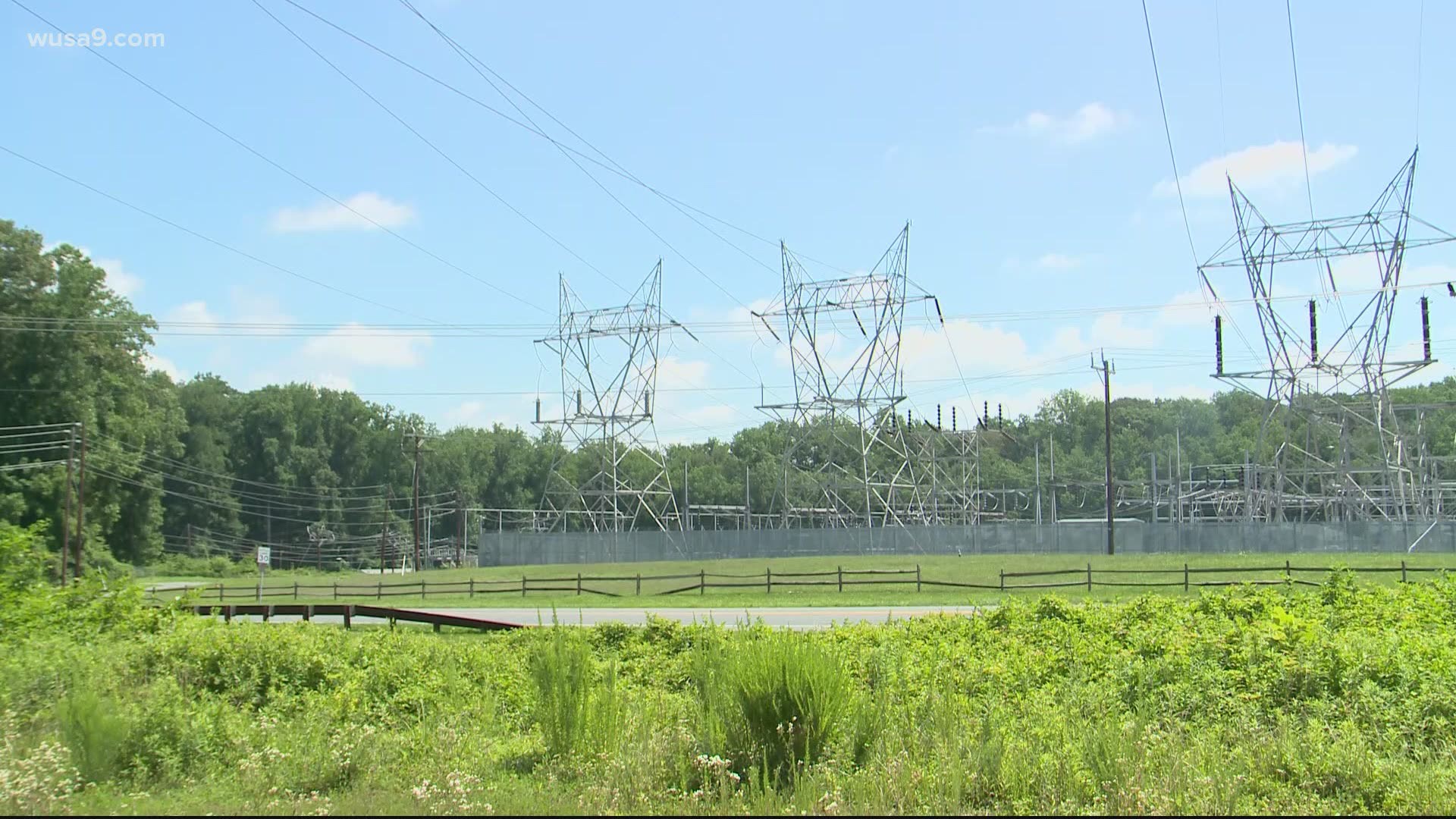RICHMOND, Va. — Heat waves are the most stressful test for our power grid, according to utility operators.
“You have to make sure that the weather and the demand can match up, that we're not putting our system in a bad situation,“ said Don Porter, manager of system operations and control for Dominion Energy from the utility's central control room in Richmond.
Porter explained that demand peaks at about 6 p.m.
“When you're first getting up in the morning your loads are down, and as people get into work and people start moving around and air conditioners then it picks up," he said.
During moderate weather, Porter said, the Dominion system eats up about 8,000 megawatts a day serving its 5 million customers from North Carolina to Northern Virginia compared to 19,700 megawatts on Monday, July 12 when temperatures in the D.C. area reached the mid-90s. The record peak was 20,100 megawatts during the summer of 2020, Porter said.
To increase the resiliency and reliability of the system Dominion and other regional utilities belong to a grid called PJM that ties utilities from 13 states and the District of Columbia together.
PJM means that power plants in faraway places where the weather might be cooler can help meet demand in other areas where it is hotter with higher demand. Dominion Energy said Northern Virginia is the fastest-growing region within the PJM system.
Most peak demand is met by firing up additional generating capacity that is fueled by natural gas, according to Porter.
Other peak power is generated by pumped storage hydroelectric projects like the Bath County pumped storage station in southwestern Virginia.
Dominion uses relatively less expensive energy during non-peak periods to run pumps to fill a reservoir, then they release the water to generate hydroelectric power to meet demand spikes when the power can be sold at higher prices.
Solar energy has become a significant factor in moderating spikes in demand, according to Porter. Solar systems are producing most efficiently during the same hot sunny conditions that are creating demand spikes.

